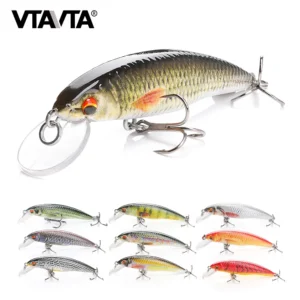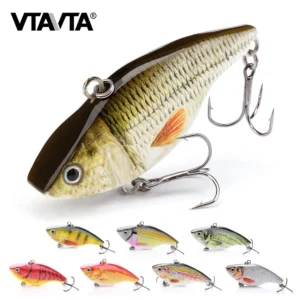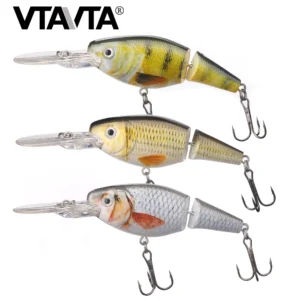Can You Take Fishing Lures on a Plane? A Traveler’s Guide to Flying with Tackle
For anglers, fishing is more than just a hobby—it’s a passion that often extends to travel. Whether you’re heading to a remote lake, a tropical beach, or a mountain stream, bringing your fishing gear along can make the trip even more exciting. But when it comes to air travel, one question looms large: Can you take fishing lures on a plane? This comprehensive guide will walk you through everything you need to know about flying with fishing lures, from TSA regulations to packing tips, ensuring your gear arrives safely and hassle-free.
Understanding Airline Regulations: What’s Allowed?
Before you pack your tackle box, it’s essential to understand the rules and regulations surrounding fishing lures and air travel. Here’s what you need to know:
1. TSA Guidelines for Fishing Lures
The Transportation Security Administration (TSA) allows fishing lures in both carry-on and checked luggage. However, there are some restrictions:
Sharp Hooks: Lures with sharp hooks are generally permitted, but they must be properly stored to prevent injury to baggage handlers or security personnel.
Size and Quantity: There are no specific limits on the number of lures you can bring, but common sense applies. Pack only what you need to avoid unnecessary scrutiny.
2. International Travel Considerations
If you’re flying internationally, check the regulations of your destination country. Some countries have strict rules about importing fishing gear, especially if it’s used or contains certain materials.
3. Airline-Specific Policies
While TSA guidelines provide a general framework, individual airlines may have their own rules. Always check with your airline before traveling to avoid surprises at the airport.
Packing Fishing Lures for Air Travel
Proper packing is key to ensuring your fishing lures make it to your destination safely and without issues. Here are some tips:
1. Carry-On vs. Checked Luggage
Carry-On: If you’re carrying lures in your carry-on bag, make sure they are securely stored in a tackle box or protective case. Remove any loose hooks and store them separately to avoid triggering security alarms.
Checked Luggage: For checked bags, use a sturdy tackle box with secure latches. Consider wrapping the box in bubble wrap or clothing to protect it from rough handling.
2. Protecting Sharp Hooks
Use hook covers or sheaths to prevent hooks from snagging on other items or causing injury. You can also place lures in a small plastic container with a lid.
3. Organizing Your Tackle Box
Keep your lures organized and separated to prevent damage during transit. Use dividers or small pouches to keep everything in place.
4. Labeling Your Gear
Clearly label your tackle box with your name and contact information. This can help identify your belongings if they get lost or misplaced.
Common Concerns About Flying with Fishing Lures
Traveling with fishing gear can raise several questions and concerns. Let’s address some of the most common ones:
1. Will TSA Confiscate My Lures?
As long as your lures comply with TSA guidelines, they should not be confiscated. However, if a security officer deems an item unsafe, they may remove it.
2. Can I Bring Fishing Line on a Plane?
Yes, fishing line is allowed in both carry-on and checked luggage. Just make sure it’s properly coiled and stored to avoid tangling.
3. What About Fishing Rods?
Fishing rods are generally allowed as checked luggage, but some airlines may permit them as carry-on items if they meet size restrictions. Check with your airline for specific rules.
4. Are There Weight Restrictions?
Most airlines have weight limits for checked luggage, typically around 50 pounds (23 kg). Make sure your tackle box and other gear don’t exceed this limit to avoid extra fees.
Tips for Stress-Free Travel with Fishing Gear
To ensure a smooth travel experience, follow these practical tips:
Research Ahead of Time: Check TSA and airline regulations before packing. This can save you time and stress at the airport.
Pack Light: Bring only the essentials to avoid overpacking and potential fees.
Arrive Early: Give yourself extra time at the airport in case your luggage needs to be inspected.
Use a TSA-Approved Lock: If you’re checking your tackle box, use a TSA-approved lock to secure it while allowing security personnel to inspect it if needed.
Consider Shipping: If you’re traveling with a lot of gear, consider shipping your tackle box to your destination ahead of time.
Real-Life Stories: Traveling with Fishing Lures
To give you a better sense of what to expect, here are a few real-life experiences from anglers who’ve flown with their fishing gear:
Story 1: The Overprepared Angler
John, an avid bass fisherman, packed his tackle box with over 100 lures for a trip to Florida. While TSA allowed him to bring them, the sheer weight of his gear resulted in a hefty baggage fee. Lesson learned: pack only what you need.
Story 2: The Last-Minute Check
Sarah, traveling to Alaska, forgot to check airline regulations and brought a large fishing rod as a carry-on. Fortunately, the airline allowed her to check it at the gate without additional fees. Her advice: always double-check airline policies.
Story 3: The International Adventure
Mike, heading to Costa Rica, researched local fishing regulations and discovered that used lures were subject to inspection. He packed his gear in a clear, labeled container and had no issues at customs. His tip: know the rules of your destination.
FAQs About Flying with Fishing Lures
1. Can I bring pliers and other tools on a plane?
Yes, but sharp tools like pliers must be packed in checked luggage.
2. Are there restrictions on lure types?
Most lures are allowed, but avoid bringing lures with large, sharp treble hooks in your carry-on to prevent delays.
3. Can I bring live bait on a plane?
Live bait is generally not allowed due to agricultural restrictions. Check with your airline for specific rules.
4. What if my tackle box is damaged during transit?
Report any damage to the airline immediately and file a claim if necessary.
Conclusion: Can You Take Fishing Lures on a Plane?
The answer is a resounding yes—you can take fishing lures on a plane, provided you follow TSA and airline regulations. By packing your gear carefully, researching ahead of time, and staying informed, you can ensure a smooth and stress-free travel experience. Whether you’re chasing bass in the Midwest or marlin in the tropics, your fishing adventure is just a flight away.
So, pack your tackle box, grab your rod, and get ready to explore new waters. Tight lines and safe travels!





